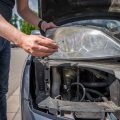1. Understanding the Indian EV Ecosystem
The electric vehicle (EV) revolution in India is gaining momentum, driven by a mix of government support, rising fuel prices, and growing environmental awareness. However, the journey towards widespread EV adoption faces unique hurdles that are distinctly Indian in nature. Currently, Indias EV market is still at a nascent stage compared to global giants like China and the US, with electric two-wheelers and three-wheelers leading the charge due to their affordability and practicality for daily commutes. Adoption rates are steadily increasing, thanks in part to ambitious government initiatives such as the FAME II scheme, which offers subsidies on electric vehicles and investments in charging infrastructure. Despite these efforts, challenges persist—ranging from limited charging stations and inconsistent power supply to concerns about battery life in extreme weather conditions and the high upfront cost of EVs. Furthermore, Indias diverse road conditions, from congested city lanes to rugged rural routes, demand robust solutions tailored to local needs. Understanding these factors is crucial for anyone considering an EV purchase or looking to invest in Indias evolving mobility landscape.
2. Charging Infrastructure: Bridging the Gap
One of the most pressing challenges for EV adoption in India is the lack of a robust and accessible charging infrastructure. While metropolitan cities like Mumbai, Bengaluru, and Delhi are slowly seeing an uptick in public charging points, the network remains inadequate when compared to the rapid growth in EV sales. The situation is even more critical in Tier 2 and Tier 3 cities, as well as rural areas, where access to reliable power supply itself can be inconsistent.
Key Issues with India’s Charging Network
| Issue | Urban Areas | Rural Areas |
|---|---|---|
| Number of Charging Stations | Growing but still insufficient for demand | Very limited or non-existent |
| Grid Reliability | Mostly stable, occasional outages | Frequent power cuts, low voltage issues |
| Accessibility & Location | Mainly at malls, offices, petrol pumps—less at homes/apartments | Lack of public locations and residential setups |
| Cost of Charging Infrastructure | High installation cost, especially in premium real estate zones | Lower demand makes investment unattractive for private players |
| User Awareness & Education | Moderate awareness; early adopters lead usage | Low awareness; range anxiety more prevalent |
Urban vs. Rural Infrastructure Challenges
The urban landscape offers more opportunities for private sector investment, but challenges remain around space constraints and integration with existing parking facilities. In contrast, rural areas face problems like unreliable electricity supply and a lack of commercial interest due to sparse population density. This urban-rural divide means that simply replicating global charging models will not work for India’s unique geography and demographics.
Localised Tech Solutions Tailored for India
- Battery Swapping: Particularly suitable for densely populated cities where quick turnaround is valued over long charging times. Startups are piloting battery swapping kiosks at auto stands and fleet depots.
- Solar-Powered Charging Stations: Harnessing India’s abundant sunlight, these stations can work even in areas with frequent grid outages—ideal for rural deployment.
- Compact Home Chargers: Affordable Level 1 and Level 2 chargers designed for Indian households with limited parking space, making home charging accessible to apartment dwellers.
- Mobile Charging Vans: On-demand charging solutions via vans equipped with fast chargers—helpful during emergencies or in remote locations.
- Community Charging Points: Shared infrastructure in residential complexes or village community centres to reduce costs and increase utilisation rates.
The Indian Way Forward: Adaptation Over Adoption
A successful EV revolution in India depends on localising solutions rather than importing global best practices wholesale. Stakeholders must consider typical Indian driving patterns, power reliability concerns, and socio-economic diversity when planning charging networks. By bridging the urban-rural gap with tailored tech solutions, India can create a sustainable and scalable EV ecosystem fit for its roads and consumers.

3. Battery Technology and Range Anxiety
One of the major concerns Indian car buyers have about EVs is battery performance and range anxiety, especially given India’s unique climatic and road conditions. High temperatures, heavy monsoons, and varied terrains—from urban stop-and-go traffic to rural pothole-ridden roads—can all impact an EV’s battery life and reliability. Unlike in cooler countries, batteries in India face additional stress due to prolonged exposure to heat and humidity, which can reduce their efficiency over time.
To address these challenges, manufacturers are now focusing on batteries with enhanced thermal management systems that can withstand India’s harsh weather. Advanced cooling technologies, such as liquid-cooled battery packs, are being introduced to ensure batteries operate optimally even during peak summer months. Furthermore, innovations like solid-state batteries promise greater durability and faster charging times, which is crucial for Indian commuters who often lack access to home charging solutions.
Range anxiety—the fear of running out of charge before reaching your destination—is another key issue. To tackle this, some brands have developed intelligent energy management systems that adapt driving modes according to real-time road and traffic conditions. In addition, several automakers are increasing the capacity of their battery packs specifically for Indian models, ensuring a practical range suitable for both city commutes and intercity travel.
Importantly, the rise of fast-charging infrastructure across metro cities and highways is helping reduce range anxiety. Newer EVs come equipped with rapid charging compatibility, allowing drivers to top up their batteries quickly during a chai break or while shopping at malls. Some companies are also experimenting with battery swapping stations—an innovative approach where you exchange your depleted battery for a fully charged one within minutes.
Ultimately, with continuous advancements in battery technology and a growing ecosystem of support services, the gap between EV expectations and ground reality in India is narrowing. As awareness spreads about these solutions, more Indian consumers will find electric vehicles a viable option for daily use—whether it’s navigating Mumbai’s traffic or taking a family trip from Delhi to Agra.
4. Affordability and Financing for Indian Buyers
One of the biggest hurdles facing EV adoption in India is affordability. The average Indian middle-class buyer is extremely price conscious and looks at not just the upfront cost, but also ongoing expenses and financing options before making a decision. While electric vehicles (EVs) have lower running costs compared to petrol or diesel cars, their initial purchase price remains high for many households.
Challenges: Upfront Costs and Ongoing Expenses
Upfront costs of EVs are typically 20-40% higher than their ICE (Internal Combustion Engine) counterparts. This price difference often puts EVs out of reach for many families, especially those looking for budget-friendly options. Additionally, buyers must consider the cost of home charging infrastructure, battery maintenance, and potential battery replacement after several years, which can add to the total ownership cost.
Financing Schemes Tailored for Indian Buyers
Banks and NBFCs are now offering new-age financing schemes focused on making EVs more accessible. Options such as low down payment EMIs, longer loan tenures, and special green loans are gaining popularity. The government’s FAME II subsidies and state-level incentives also help reduce the initial burden, but awareness about these benefits remains low in Tier 2 and Tier 3 cities.
Comparing Total Cost of Ownership: EV vs ICE
| Parameter | Electric Vehicle (EV) | Petrol/Diesel Car |
|---|---|---|
| Upfront Cost | Higher (₹10-15 lakh+) | Lower (₹6-10 lakh) |
| Monthly Running Cost* | ₹500-800 | ₹2500-3500 |
| Maintenance Cost (Annual) | Low (₹2000-4000) | High (₹7000-12000) |
| Loan Schemes Available | Green Loans, Low EMI, Subsidy-linked loans | Standard Car Loan |
*Estimated for 1000 km/month; rates vary by city and usage.
Cultural Mindset: Value-for-Money & Long-Term Savings
The Indian buyer’s approach is deeply rooted in value-for-money thinking. While the higher upfront price of an EV may seem daunting at first, highlighting long-term savings on fuel and maintenance can make a strong case. Dealers and financial advisors need to proactively educate buyers about total cost of ownership and available government schemes to build trust and confidence in going electric.
5. Local Manufacturing and Supply Chain Solutions
One of the most promising ways to overcome the unique EV challenges in India is through a strong emphasis on local manufacturing, guided by the Make-in-India initiative. By focusing on localisation of EV components—such as batteries, motors, controllers, and charging infrastructure—India can not only reduce its dependency on imports but also bring down overall vehicle costs for consumers. Domestic manufacturing allows companies to tailor products specifically for Indian road conditions and usage patterns, resulting in more reliable and robust EVs suited for our environment.
Boosting Make-in-India for the EV Sector
Creating Jobs and Reducing Costs
Manufacturing EV parts locally creates large-scale employment opportunities across different skill levels while making vehicles more affordable. When companies source and produce components within India, they bypass import duties and logistics expenses, passing these savings onto buyers. This makes electric vehicles a practical choice for the average Indian family or business owner looking to upgrade their mode of transport.
Enhancing Component Availability
Localisation ensures a faster turnaround time for spare parts and after-sales service. Indian drivers often face long wait times for imported components; by fostering domestic suppliers, these delays can be minimised, keeping vehicles on the road with less hassle.
Government Incentives Driving Localisation
The government’s FAME-II scheme and Production Linked Incentive (PLI) schemes are already pushing automakers to invest in domestic assembly lines. These policies encourage global players to partner with local firms, helping develop a resilient supply chain network that can withstand international disruptions.
Strategies for Strengthening Domestic Manufacturing
- Technology Transfer: Collaborations with established international brands help bring advanced technology to India, which can then be adapted to local needs.
- Skill Development: Training programmes equip workers with specialised skills required in EV manufacturing, ensuring quality standards remain high.
- Cluster Development: Setting up dedicated EV manufacturing zones—like those already emerging in Tamil Nadu, Maharashtra, and Gujarat—streamlines supply chains and reduces logistical overheads.
Ultimately, embracing local manufacturing not only supports the Indian economy but also addresses the cost and availability issues that currently hamper widespread EV adoption. For Indian buyers seeking value-for-money options without compromising on quality or after-sales support, prioritising Made-in-India electric vehicles is a smart move towards a greener future.
6. Cultural Mindset and Consumer Awareness
When it comes to EV adoption in India, the cultural mindset and consumer awareness play a crucial role. Many Indian buyers still hold on to long-standing beliefs and myths about electric vehicles, which become significant barriers to mass acceptance. A common perception is that EVs are only suited for urban elites or tech-savvy individuals, while rural and semi-urban users doubt the practicality of these vehicles for their daily needs. Moreover, myths around battery life, charging hassles, high upfront costs, and lack of power compared to traditional petrol or diesel vehicles persist widely. For many families, vehicle purchase is a major investment influenced by trust in tried-and-tested models rather than new technology.
Barriers Rooted in Tradition
Indian consumers often value reliability, resale value, and ease of repair when choosing a car or bike. The fear that EVs might not withstand tough Indian roads or extreme weather conditions also deters potential buyers. Additionally, there’s apprehension about finding skilled mechanics for EV maintenance outside major cities. All these concerns add up to a cautious approach towards EV ownership.
Busting Myths Through Information
The need of the hour is to break these myths with clear, relatable information. Automakers, government bodies, and influencers can play a key role in spreading facts about EV durability, improving charging infrastructure, and highlighting running cost benefits. Real-life testimonials from early adopters in Indian cities and towns can help build trust among skeptical consumers.
Community-Driven Awareness Campaigns
Grassroots campaigns at the community level are showing promising results across India. Local events where people can experience EVs firsthand, interactive workshops at colleges and RWAs (Resident Welfare Associations), and digital campaigns in regional languages are driving home the message that EVs are for everyone—not just a select few. These initiatives help answer practical questions and address genuine concerns of Indian families.
By shifting the focus from myths to facts and from fear to familiarity, community-driven awareness efforts are making EVs more acceptable on Indian roads. With continued education and exposure, the cultural mindset is gradually evolving towards embracing electric mobility as a smart, future-ready choice for all Indians.
7. Government Policies and Future Outlook
Government initiatives play a pivotal role in steering the growth of electric vehicles (EVs) in India. Over recent years, both central and state governments have rolled out policy reforms to promote EV adoption, recognising the need for sustainable mobility solutions tailored to Indian roads. The Faster Adoption and Manufacturing of Hybrid and Electric Vehicles (FAME) scheme is at the forefront, offering direct subsidies on EV purchases and incentives for manufacturers, especially those producing two-wheelers and three-wheelers that suit Indian commuting patterns.
Policy Reforms and Subsidies
The FAME II scheme has been extended until March 2024, providing up to ₹15,000 per kWh subsidy for electric two-wheelers and significant benefits for electric buses and charging infrastructure development. Several states like Maharashtra, Delhi, Gujarat, and Tamil Nadu have introduced their own EV policies, offering additional benefits such as road tax exemptions, registration fee waivers, and dedicated EV zones. These measures are designed to address cost barriers and make EVs more accessible to the average Indian consumer.
Incentives for Local Manufacturing
The government’s push for “Make in India” has led to incentives for local production of batteries and components. The Production-Linked Incentive (PLI) scheme aims to boost domestic manufacturing, reduce import dependency, and create jobs within the green mobility sector. By encouraging homegrown innovation, these policies are helping Indian companies develop solutions suited for local conditions—think rugged battery packs for hot climates or compact vehicles for narrow city lanes.
Looking Ahead: What Does the Future Hold?
The outlook for EVs in India is promising but not without challenges. With continued policy support, increasing investment in charging infrastructure, and a growing focus on renewable energy integration, the foundation for mass EV adoption is being laid brick by brick. The government’s ambitious goal of achieving 30% EV penetration by 2030 will require ongoing collaboration between policymakers, industry players, and consumers. Expect more targeted subsidies, stricter emission norms for ICE vehicles, and innovative financing options tailored to Indian buyers in the coming years. For those considering an EV purchase today or in the near future, keeping an eye on evolving policies can help maximise both savings and satisfaction on your road to green mobility.


